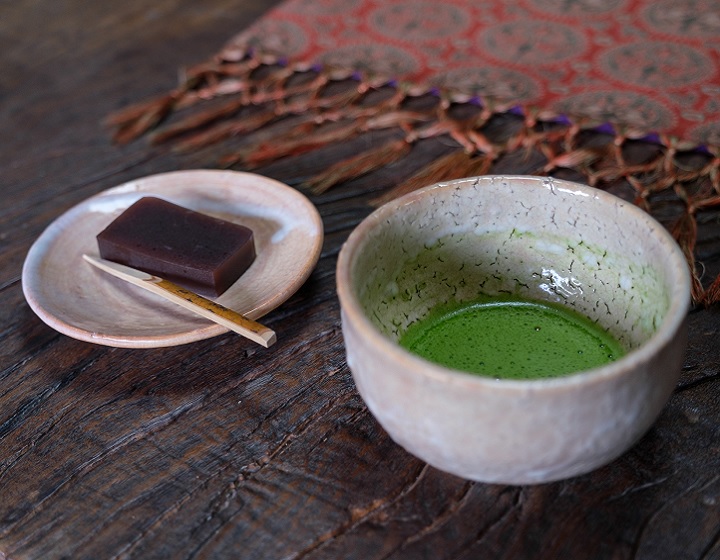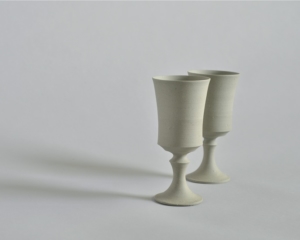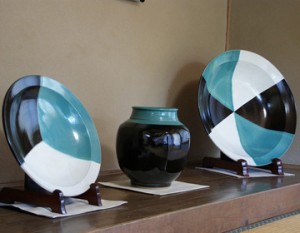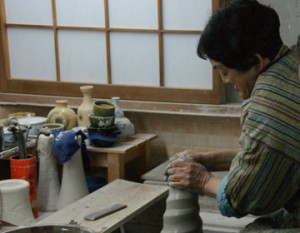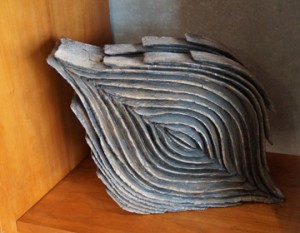Hagi City, Yamaguchi Prefecture, is a town with a rich history, famous for the “Matsushita-murajuku” where Shoin Yoshida, Hirobumi Ito, and other patriots at the end of the Edo period studied. In this town, which is often the setting for historical dramas and has a strong image of an ancient capital, there is a young potter who is attracting attention: at the age of 34, Yuta Saka has taken the name of Saka Koraizaemon, the head of the Hagi ware family. What is the charm of Hagi ware and its future that this young potter, who has inherited a 400-year-old Hagi-yaki tradition, is preserving and passing on?
Hagi, Yamaguchi Prefecture, one of the most historic castle towns in Japan
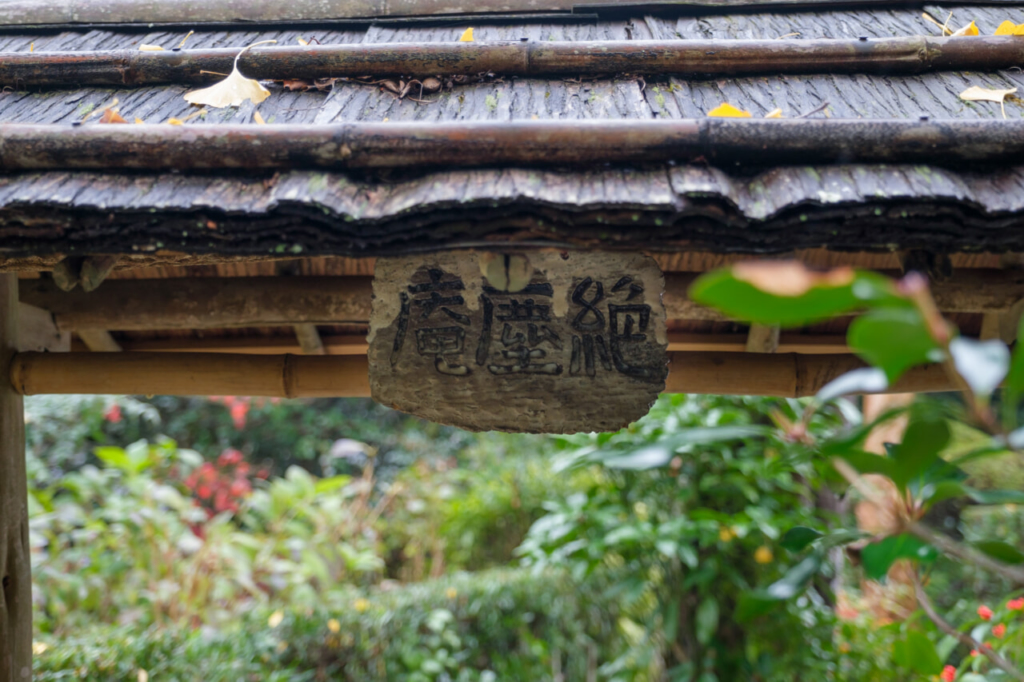
Hagiyaki is a traditional craft that has been handed down from generation to generation in such a popular tourist destination. Its origins date back to 1604. Terumoto Mori, the first lord of the Hagi domain, moved his castle from Hiroshima to Hagi and entered the prefecture. Under orders from the Mori clan, Korean potters Ri Shakko and Ri Kei, who had been accompanying Terumoto, opened a kiln in Matsumoto Village under Hagi Castle (now Tsubakigashi, Hagi City) as the Hagi clan’s official kiln. Later, each of the brothers became naturalized Japanese citizens, with the elder brother Li Shikou taking the name of the Yamamura family (later the Sakakura family name) in Nagato, and the younger brother Li Kei receiving the name “Saka Koraizaemon” from Tsunahiro, the second lord of the domain, in 1625. The Saka family, the keepers of the Saka kiln, are descendants of Rikei.
The Appeal of Hagiyaki as Matcha Bowls
Until then, Hagi-yaki was called “Matsumoto-yaki,” after the castle town where it was located. Hagi-yaki was discovered by Sen no Rikyu, a tea master of the Warring States period, as an expression of wabicha (wabi tea), and became widely popular as matcha (powdered green tea) bowls. Hagi ware is characterized by the earthy simplicity of its clay, which is made from “daido-utsuchi,” a type of clay found in the Hagi area. The Daido-Utsuchi clay, which contains sand and pebbles, is fired at high temperatures in a short time so as not to over-fire the clay, resulting in a light texture that allows for changes in appearance over time, such as water and oil seeping into the clay. The combination of the roughness of the original clay and the fine texture created by mixing Mishimatsuchi, a clay with high iron content, and Mitaketsuchi, a light white clay, with Omichi-do is also an attractive texture.
Hagiyaki matcha bowls often have a surface finished only with glaze, eliminating decoration as much as possible. This contrasts with the beauty of the original color of matcha, which enhances the tea to its fullest, and is the reason why matcha bowls have long been highly valued and popular in the tea ceremony, where “aprosa-sabi” is highly valued.
In June 2022, at the age of 34, the youngest generation of tea masters will take over the name of the tea master.
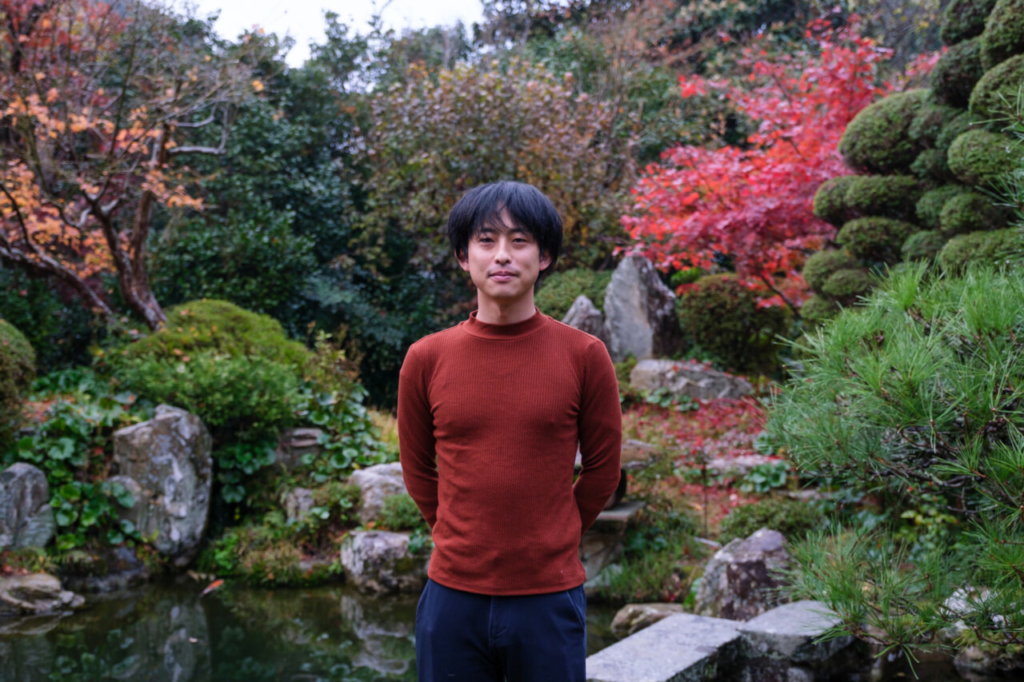
Although he was aware that his family had always been involved in ceramics, he did not come into contact with ceramics until he was in high school. For Mr. Saka, the Saka Kiln was simply the home of his grandparents. However, the sudden death of her uncle (her mother’s brother), who was the 12th generation successor, completely changed her environment. With no successor, the family name became vacant for seven years, and he and his mother, Junko, decided to take over the prestigious family business.
To say that there was no pressure to assume the heavy responsibility was, of course, somewhat true. However, he also said, “I have always been very interested in the field of history, and I thought it would be interesting if I could be a party to supporting history and folklore.
Contrary to his optimism, Mr. Saka has taken pottery making seriously. Since he wanted to make matcha bowls, he chose to study ceramics at Kyoto University of Arts (formerly Kyoto University of Art and Design), because he wanted to specialize in Kyoto, where arts and crafts related to tea ceremonies are concentrated. He then spent one year at the Kyoto Prefectural College of Advanced Technology for Ceramic Art and Ceramics, and two years at the National Institute of Advanced Industrial Science and Technology, where he continued his research on scientific analysis of raw materials for pottery, before returning to Hagi in 2013.
The back of his mother, the 13th generation
While Mr. Saka was training in Kyoto, his mother, Junko, assumed the name of the 13th generation in 2011.
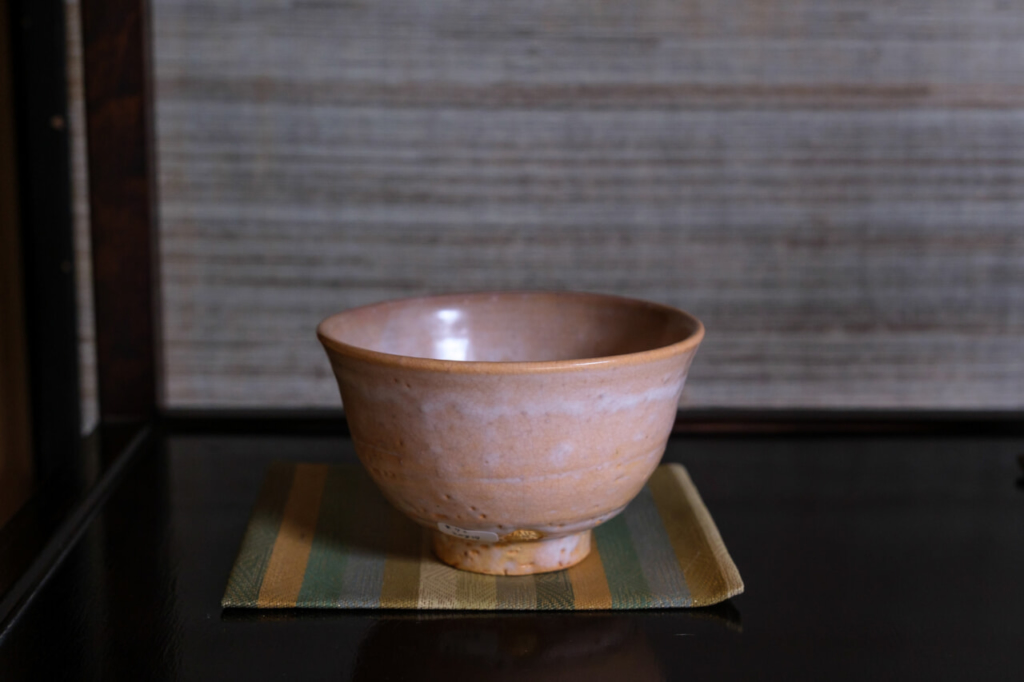
Soon after, however, Junko passed away suddenly. After returning home, he spent only a year and a half with his mother as the 13th generation. Yuta, who was only 26 years old at the time, could not immediately take over the headmaster’s name with his current level of experience, even if the position were to become vacant. Therefore, he worked as a potter-Yuta Saka for a while, and then finally assumed the name of the 14th generation in 2021. At first, he asked the craftsmen who had supported the Saka Kiln since his predecessors to teach him the basics, such as the family’s annual events, and worked hard on his pottery making.
As Yuta Saka, a potter. As the head of the Soke family
Before assuming the name of Soke, he had been active as Yuta Saka, a potter, and his works have been highly evaluated and have been selected for many exhibitions.
He has also turned his attention to objets d’art and conceptual contemporary works, which he studied at university, and has proposed new Hagiyaki charms such as a neck for composition, a flower vase with a low center of gravity, and a single-flower vase with a long, narrow mouth. He has also been eager to explore new genres, such as coffee cups, without being bound by tradition.
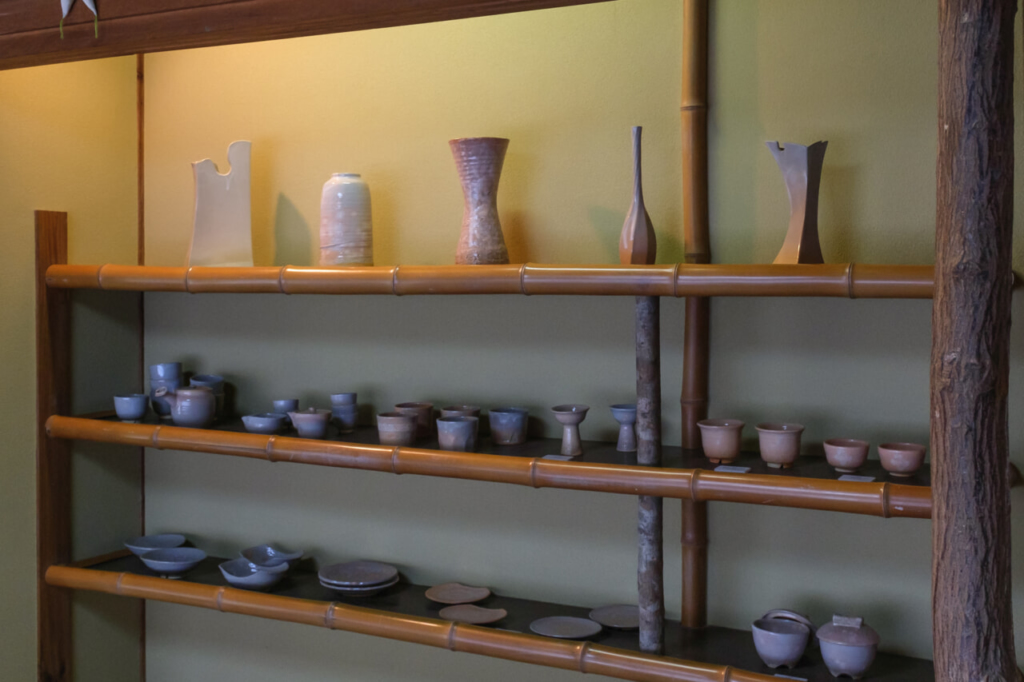
On the other hand, traditional matcha bowls are faithfully made one by one on a kick wheel. He tries to preserve the original texture of the clay by using as little time and labor as possible. When shaping the bowls with an ox spatula, he wants to preserve the finger lines and hand marks as much as possible, so he dares to break the balance of the bowls to preserve the flavor of the bowls.
The charm of Yuta’s work lies in the way he combines new ideas with traditional techniques that he has preserved.
The Hissen type matcha bowl with a height change at the mouth, called Kuchizukuri, is a fusion of the traditional Hagiyaki basics and a different type of Korai tea bowl form. The cool white glaze that hangs faintly over the rim is elegant and beautiful, and makes you want to sip it even if you are not familiar with matcha bowls. The bowl also incorporates the traditional production method of “clay showing height” that emphasizes the original strength of the clay.
Sometimes, he receives specific advice from experts in the tea ceremony and applies it to his pottery making. Recently, the “Meimei Dish,” a small tray that can be used individually, has been well received in consideration of the new lifestyle in recent years, whereas the traditional tray is used as a receptacle for tea cakes. With the support of the people around him, ideas for the evolution of Hagiyaki for the next generation are being born one after another, probably due in part to his own personality.
Sympathizing and Dialoguing with the Works of Predecessors
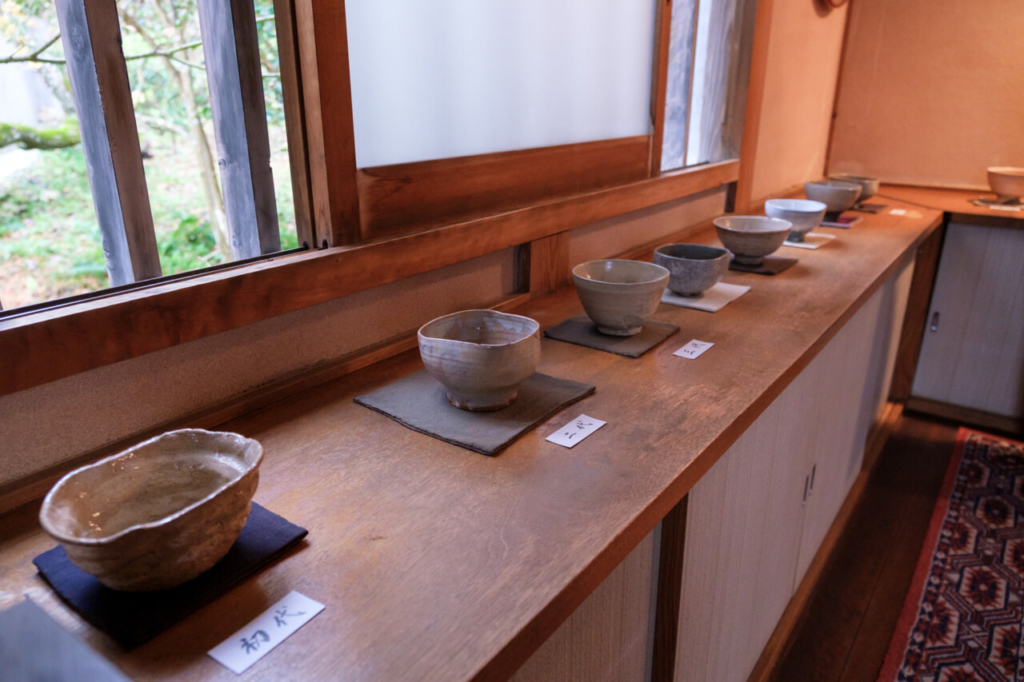
Yuta not only imitates his late mother’s works, but also goes back to his uncle, the 12th generation, his grandfather, the 11th generation, and sometimes even earlier generations, in order to feel the ingenuity of the production and the intent of the expression itself. It is precisely because they have continued to preserve their important works for future generations that I am able to reinterpret and express them, taking into account their background and true meaning. This is the greatest strength of the Soke that has preserved and continued the tradition for 14 generations, and it is the driving force that we hope to pass on to future generations.

Currently, Yuta has spent several years creating and saving his works as the 14th generation and is vigorously preparing for a solo exhibition. While keeping the basics of Hagiyaki under control, he takes on new challenges and devises new ways of expression, sometimes listening to the voices of those with knowledge of the tea ceremony from the perspective of those who use it, and continues to explore the delicate techniques of climbing kiln firing. Because it is the Soke, not only do they respect tradition, but they also create the future of Hagiyaki by passing on the knowledge and know-how they have accumulated as the 14th generation to the young people who will become the 15th and 16th generations, and by evolving and changing the kiln. The tea culture is tapering off due to a declining population and a shift away from classical culture. He believes that the most important thing for the development of Hagi ware is not only to “protect” it, but also to “transmit” it to the world and expand it.
Recently, more and more people have become interested in the tea culture and come all the way from overseas to visit. Yuta has witnessed such an environment. He hopes to create works of art that will move people around the world without words.



